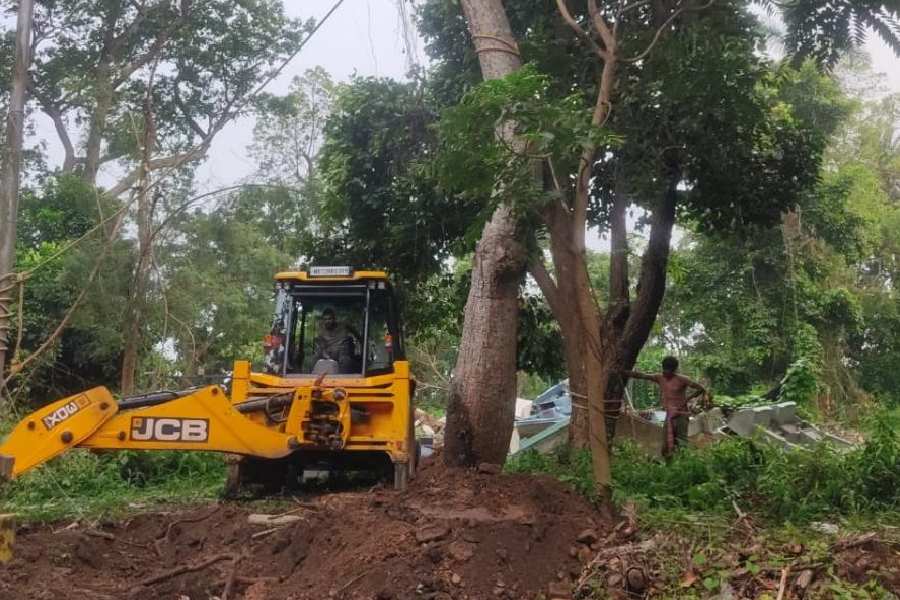Cyclone Remal felled over 100 trees at the Indian Botanic Garden.
Most of them were completely uprooted and some partially. Some trees were severely damaged.
Workers have replanted 40 of the fallen trees till Tuesday. Efforts are on to replant some more.
Garden director Devendra Singh believes about 30 of the 40 replanted trees will survive.
The Great Banyan Tree has mercifully survived the storm without damage, said Singh. The tree had lost a large part of its canopy to Cyclone Amphan (in May 2020), which is yet to regrow.
“We will be able to finish the assessment and restoration within a week,” said the director. The fallen trees are being lifted with the help of cranes and their roots treated for fungal infection before being replanted. Some of the trees are being supported with triangular bamboo props.
A four-member committee, headed by the garden director, has been formed to assess the damage to the 235-year-old garden.
Among the fallen trees, some belong to endemic and endangered species. They include Vateria indica or White Damar, Parkia biglandulosa or Badminton Ball Tree, Ceiba speciosa or Silk Floss Tree, Cycas rumphii or Queen Sago, and Swietenia Mahogany.
The other affected species include Tabeuia rosea or the Rosy Trumpet Tree, Cassia javanica or Apple Blossom Casia Tree, Brownea hybrida or Mountain Rose Tree.
Speaking about the damage, Singh said: “On Monday morning, as I was taking the rounds of the garden, not many trees had fallen. I counted about 30 to 40 trees that had been uprooted or partially damaged. But by afternoon, many more
had fallen.”
He cited two reasons for trees in the garden not being able to withstand cyclones. “The underground water table here is very high, as a result of which roots cannot grow deep. Secondly, there is something wrong with the landscaping of the garden because there is a lot of waterlogging. The accumulated water from the rain is not draining towards the lakes. That is why by afternoon, because of the resultant waterlogging, more earth loosened and more trees fell. We have to look into this.”
Now that cyclonic storms are likely to be more frequent because of climate change, what could be done to save the trees?
Singh said: “We need to regularly prune and trim trees scientifically. Unless we trim them and ensure that the trees’ centre of gravity is maintained, such trees will be uprooted. Our staff are not allowed to prune trees. Whenever we are pruning trees, morning walkers are creating problems. They film the process and then file court cases. Our staff members are scared to work because of them.”











